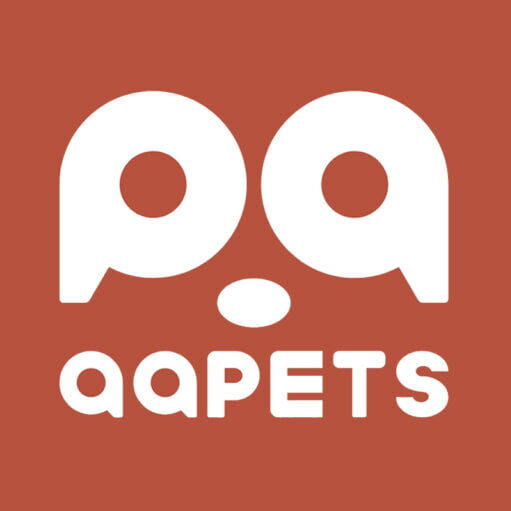Arnês de LED para cães
O QQPETS é um líder fabricante de acessórios para animais de estimação especializada em arreios, coleiras e guias para cães de alta qualidade. Nossas instalações de produção na China são equipadas com tecnologia avançada para criar produtos que não são apenas duráveis, mas também confortáveis e respiráveis para animais de estimação.
A QQPETS também oferece produtos especializados, incluindo arreios e coleiras de LED para cães para maior visibilidade e segurança. Nossos produtos de LED são projetados para passeios noturnos, proporcionando segurança extra para os animais de estimação e seus donos, enquanto nossos arreios padrão são feitos para o conforto e a confiabilidade do dia a dia.
Os arreios para cães são uma parte essencial dos cuidados com os animais de estimação, assim como os equipamentos de segurança para humanos. As vantagens de usar os produtos da qqpets incluem durabilidade, conforto e materiais ecologicamente corretos, garantindo a segurança e o bem-estar de seu animal de estimação com o mínimo de esforço.

Arnês de LED para cães rosa

Arnês de LED para cães cinza

Arnês de LED para cães laranja

Arnês de LED para cães roxo

Arnês de LED para cães cinza
Entre em contato conosco para personalizar seus acessórios de LED
SOLICITE UMA COTAÇÃO PARA OBTER MAIS DETALHES
Introduction to LED Dog Harnesses: Illuminating a New Era in Pet Safety and Style
The global pet products industry is a landscape of constant evolution, driven by a deep-seated emotional connection between humans and their animal companions. For wholesalers, distributors, and retail brand owners, staying ahead of this evolutionary curve is not just an advantage; it is a necessity. Among the most significant recent innovations, the LED dog harness stands out as a beacon of progress, masterfully blending safety, technology, and modern aesthetics. This introduction explores the rise of this product category, its market trajectory, and the fundamental problems it solves for the modern pet owner.
The Evolutionary Journey of Dog Harnesses
To understand the impact of the LED harness, we must first appreciate the evolution of its non-illuminated predecessor. For decades, the simple dog collar was the default choice for walking a dog. However, a growing awareness of canine physiology and well-being, championed by veterinarians and trainers, revealed the potential dangers of collars. Pulling on a collar concentrates pressure on a dog’s sensitive trachea and neck, posing risks of injury, especially for smaller breeds or dogs with respiratory issues.
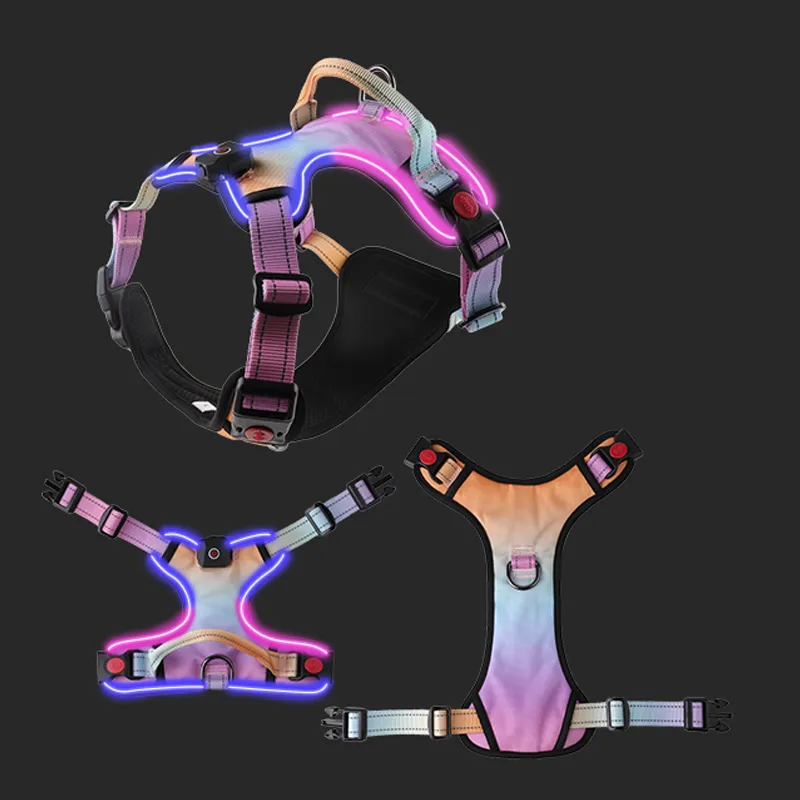
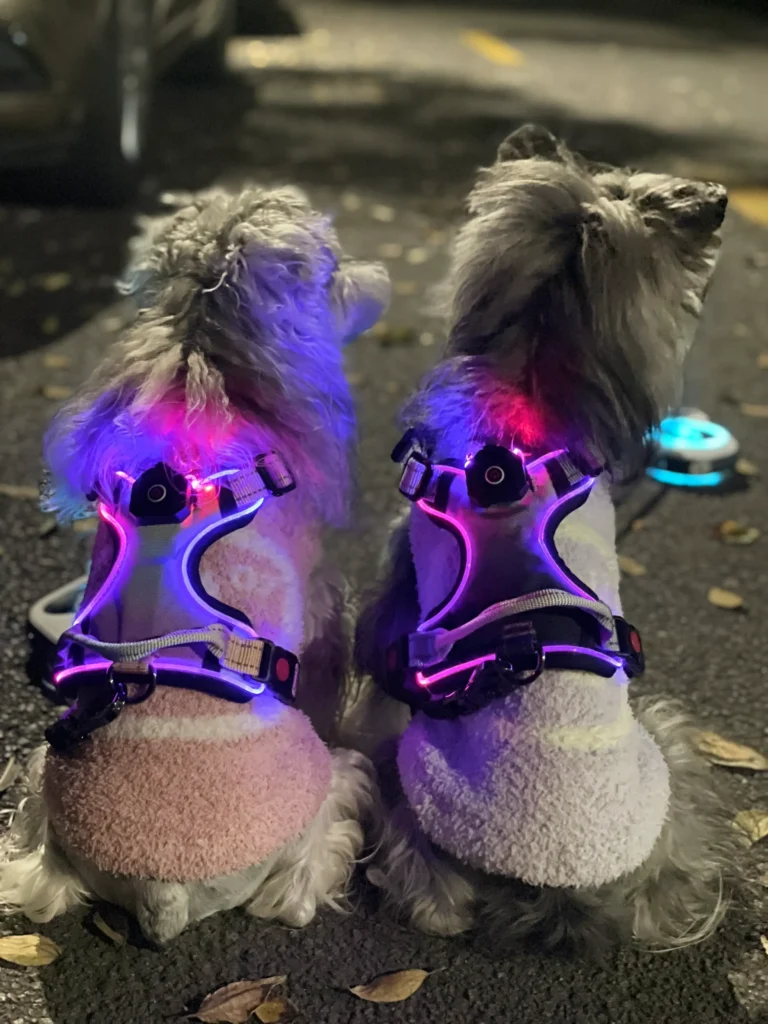
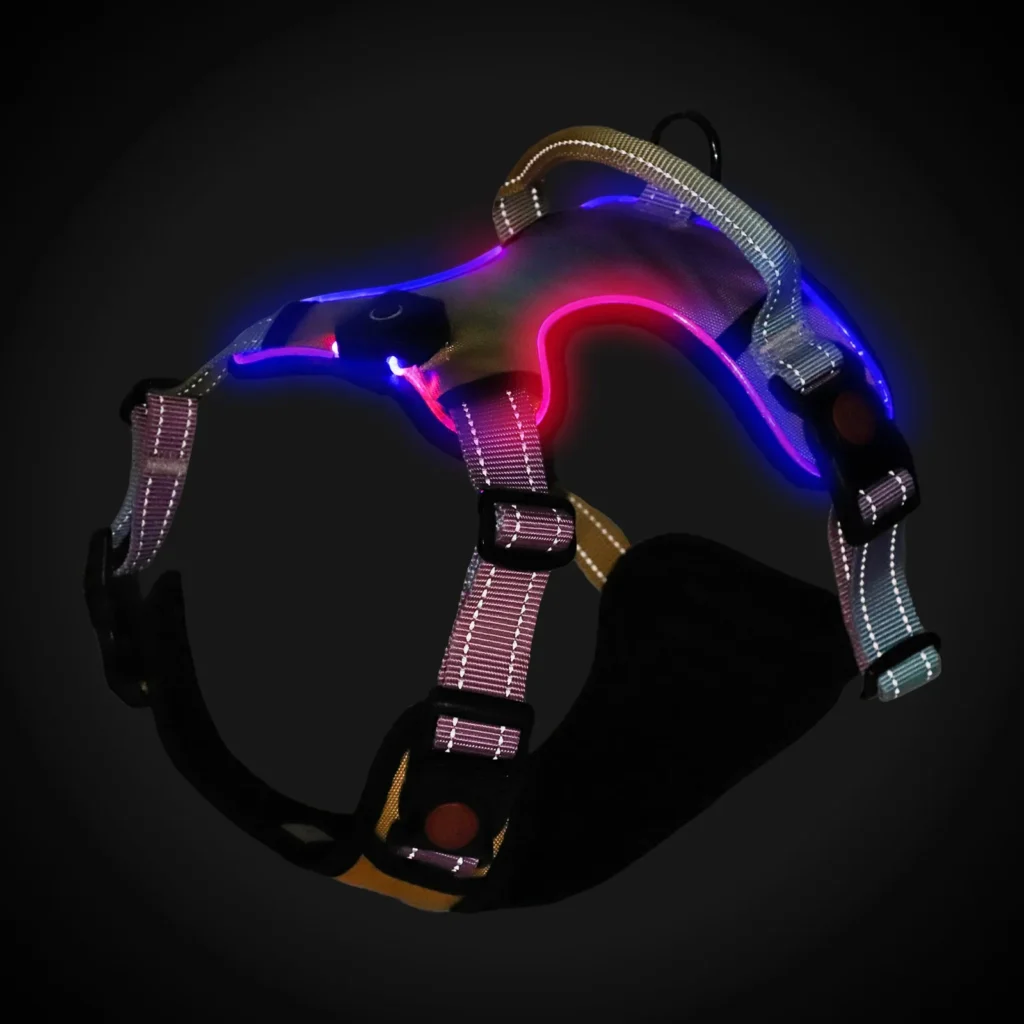

The Rising Trend of LED Pet Accessories
The emergence of LED pet accessories is not an isolated phenomenon but a confluence of several powerful market trends.
Heightened Safety Consciousness: Urban and suburban environments present significant risks for pets after dark. Poorly lit streets, cyclists, and vehicle traffic create a constant threat. Pet owners are more anxious than ever about their pet’s safety, actively seeking products that provide tangible protection. An LED harness transforms a dog from a barely visible shadow into a bright, unmistakable beacon, visible from hundreds of meters away.
The “Pet-Tech” Boom: Consumers have embraced technology in every facet of their lives, and the pet industry is no exception. From automated feeders and GPS trackers to smart toys, “pet-tech” is a booming sector. LED accessories fit perfectly within this category, offering a simple yet effective technological upgrade to an essential piece of equipment. They represent an accessible entry point into the world of pet technology for consumers who may not be ready for more complex gadgets.
Social Media and Aesthetics: In the age of Instagram and TikTok, a pet’s appearance matters. “Insta-worthy” products drive sales. An LED harness is visually striking and highly photogenic, creating a futuristic, eye-catching look that owners love to share. The vibrant colors and dynamic flashing modes make a dog stand out, not just for safety, but for style. This aesthetic appeal adds a powerful emotional driver to the logical, safety-based purchasing decision.
For a business like yours, this trend represents a product category with dual appeal: it is both a practical safety device and a desirable fashion accessory, broadening its target audience and increasing its perceived value.
Market Growth Statistics and Future Projections
The numbers underpinning the LED pet accessory market are compelling for any prospective distributor or retailer. While niche, this segment is riding the growth waves of the larger pet accessories and pet-tech markets.
According to market research from firms like Grand View Research and Mordor Intelligence, the global pet accessories market is valued at over USD 30 billion and is projected to grow at a Compound Annual Growth Rate (CAGR) of approximately 6-7% through 2030. Within this, the “smart” or “tech” segment, which includes LED products, is growing at an even faster pace, with some analysts projecting a CAGR of over 15-20%.
Key statistics to consider:
– Market Penetration: In major markets like North America and Europe, an estimated 40-50% of dog owners report walking their dogs after dusk, especially during the shorter daylight hours of autumn and winter. This represents a massive addressable market.
– Projected Growth: The LED pet products sub-market, currently estimated in the hundreds of millions of dollars, is expected to cross the billion-dollar threshold within the next five to seven years. This growth is driven by decreasing costs of LED and battery technology, coupled with increasing consumer demand for safety and novelty products.
– Regional Dominance: North America and Europe currently dominate the market, driven by high disposable income, a strong culture of pet ownership, and established safety regulations. However, emerging markets in Asia-Pacific and Latin America are showing rapid adoption rates.
How LED Harnesses Address Core Safety Concerns
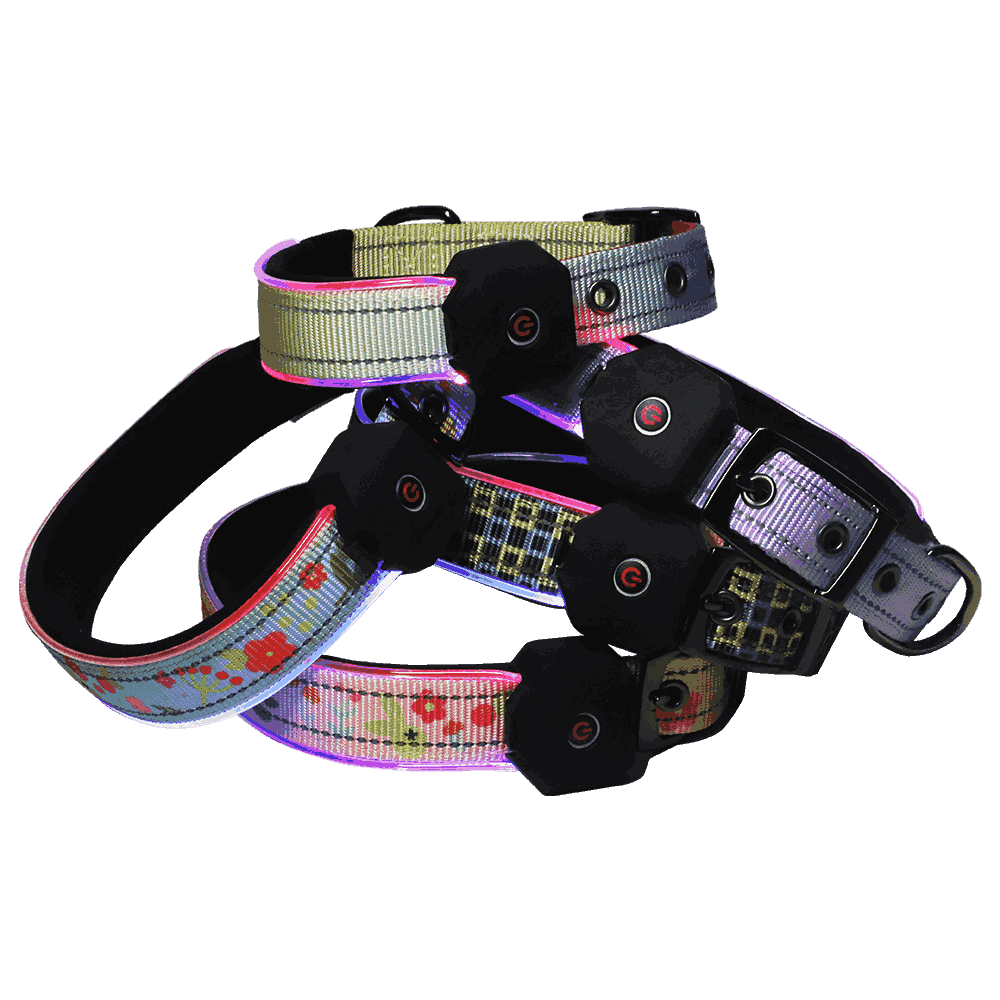
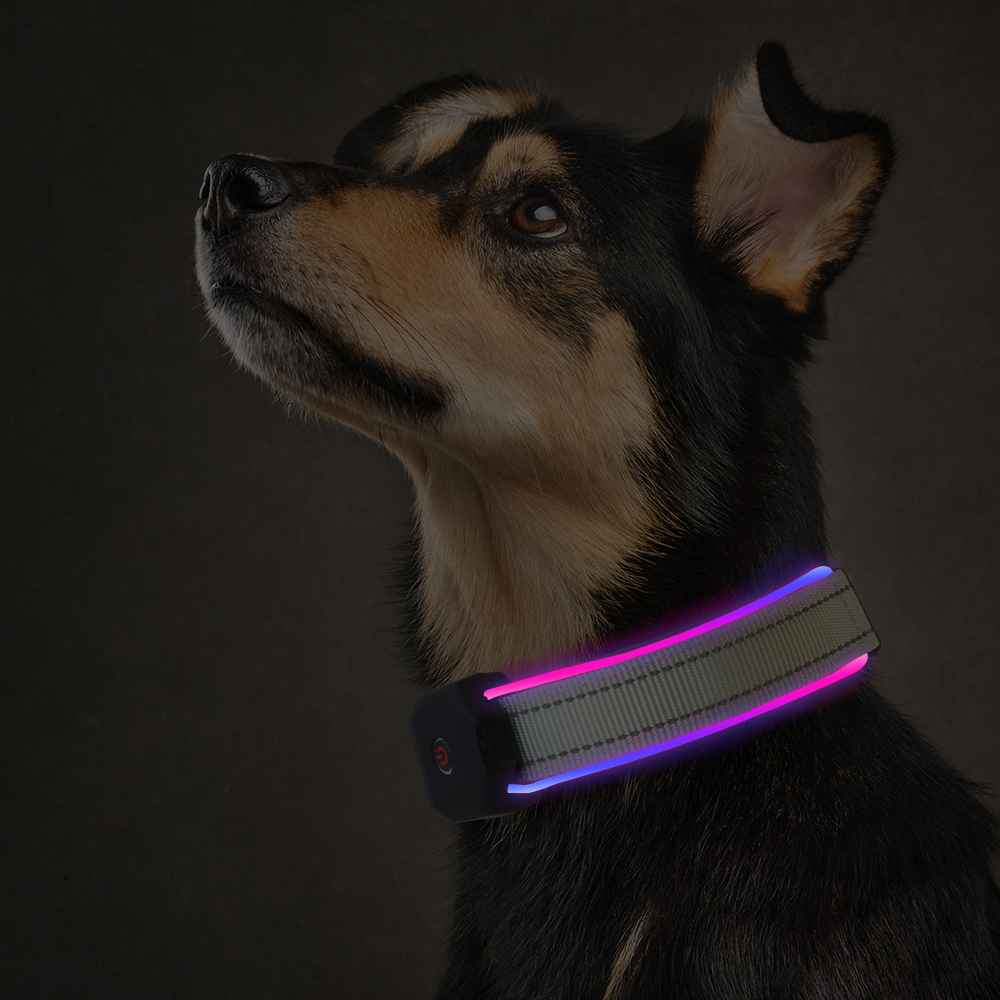
At its heart, the value of an LED harness lies in its ability to mitigate risk and provide peace of mind. It directly addresses the most pressing fears of a pet owner during low-light conditions:1. Visibility to Traffic: The primary function is to make the dog hyper-visible to cars, motorcycles, and cyclists. A typical driver’s reaction time is significantly improved when they can spot a potential hazard from 200-300 meters away, as opposed to only seeing a dark shape at the last second. This can be the difference between a safe walk and a tragic accident.
2. Off-Leash Safety: In designated off-leash areas like parks or fields, it can be easy to lose sight of a dog as it runs and plays at dusk. An LED harness allows the owner to track their dog’s location visually from a distance, preventing panic and ensuring they can recall the dog safely.
3. Owner Visibility: An illuminated dog also acts as a beacon for the owner. This makes the walking pair more visible to others, which can be a personal safety feature for people walking alone at night.
4. All-Weather Performance: A well-constructed, weather-resistant LED harness ensures this safety feature remains functional during rain, snow, or fog—conditions where visibility is already compromised and the need for illumination is greatest.
By offering a product that so effectively solves these universal problems, retailers can provide immense value to their customers, fostering loyalty and justifying a premium price point.
The Technology Powering LED Dog Harnesses
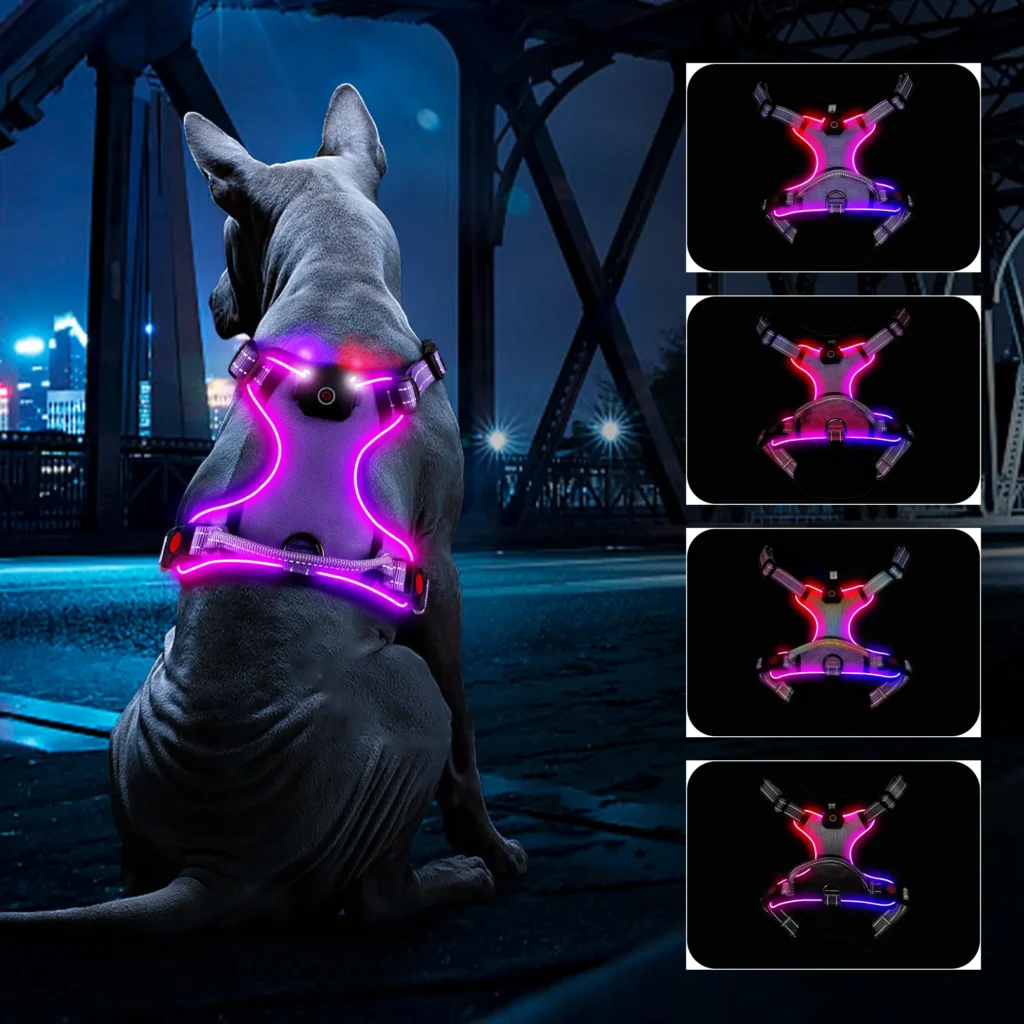
LED stands for Light-Emitting Diode. Unlike traditional incandescent bulbs that heat a filament until it glows, an LED is a semiconductor device that emits light when an electric current passes through it. For a dog harness, this technology is superior for several reasons:
– Energy Efficiency: LEDs convert a much higher percentage of electricity into light rather than heat. This means a small, lightweight battery can power the harness for many hours, which is essential for a wearable product.
– Durability: LEDs are solid-state components. They have no fragile filaments or glass bulbs to break. This makes them highly resistant to shock, vibration, and the rough-and-tumble activities of a playful dog.
– Longevity: A single LED can have a lifespan of 50,000 hours or more. For the consumer, this means the lighting element will likely outlast the fabric of the harness itself.
– Safety (Low Heat): Because they are so efficient, LEDs produce very little heat. This is a critical safety feature for a product worn directly against a dog’s fur and skin, eliminating any risk of burns or discomfort.
– Brightness and Color: Modern LEDs can produce incredibly bright light in a wide spectrum of vibrant colors, from standard red and blue to customizable RGB (Red, Green, Blue) options.
Within harnesses, you’ll typically find LED components integrated in one of two ways:
– Discrete LEDs: A series of individual LED bulbs spaced out along a circuit, often housed within a flexible, transparent tube.
– Fiber Optic Strips: A central LED (or two) shines light into a specially designed polymer fiber optic tube, which then diffuses the light along its entire length for a smooth, continuous glow. This method often provides a more uniform and aesthetically pleasing look.
Battery Types and Power Management: The Engine of the Harness
– USB Rechargeable (Lithium-ion / Lithium-polymer): This is the modern standard and the preferred choice for premium products.
– Technology: These harnesses contain a small, rechargeable Lithium-ion (Li-ion) or Lithium-polymer (Li-Po) battery. Li-Po batteries are often favored as they can be made in thinner, more flexible shapes, making them easier to integrate into the fabric of a harness without adding bulk.
– Pros: Highly convenient (can be charged from any USB port like a phone), cost-effective in the long run (no need to buy replacement batteries), and more environmentally friendly.
– Cons: Higher initial manufacturing cost, and the user must remember to charge it. A good quality harness should offer a battery life of 8-15 hours on a single charge.
– Replaceable Coin Cell Batteries (e.g., CR2032, CR2016): This is the technology found in lower-cost or older models.
– Technology: The harness is powered by one or two small, flat, disposable “button” batteries.
– Pros: Lower upfront cost to manufacture and purchase. The user can instantly restore power by swapping in new batteries, with no downtime for charging.
– Cons: Ongoing cost for the consumer to buy new batteries, generates more waste, and battery life is often shorter than rechargeable models. These batteries can also pose a swallowing hazard if they are not secured in a child-safe (and dog-proof) compartment.
For a brand targeting quality-conscious consumers in markets like the USA and Europe, offering a reliable, safe, USB-rechargeable system is the clear strategic choice.
The power source is arguably the most critical component determining the user experience and product quality. The choice of battery technology impacts convenience, long-term cost, and environmental footprint.

Waterproof and Durability Technologies
Dogs play in all conditions—rain, snow, puddles, and mud. An LED harness that fails after one rainy walk is a product destined for negative reviews. Therefore, robust weatherproofing is non-negotiable. This is typically communicated through an **IP (Ingress Protection) Rating
– IP Ratings Explained: An IP rating consists of two numbers (e.g., IP65). The first digit rates protection against solid objects (like dust), and the second rates protection against liquids (water). For pet products, the second digit is the most important.
– IPX4: Splash Resistant. Can withstand water splashes from any direction. This is the minimum acceptable standard for a quality LED harness, making it suitable for walks in light rain.
– IPX5: Water Jet Resistant. Can withstand low-pressure jets of water. Better protection against heavy rain.
This protection is achieved by:
– Sealing the Electronics: The battery compartment and power button are sealed with rubber or silicone gaskets.
– Protecting the LEDs: The LED strips or fiber optics are fully encased in a waterproof, flexible silicone or PVC tube.
– Coated Circuitry: In high-end models, the internal circuit board itself may have a conformal coating that makes it resistant to moisture.
As a manufacturer, being able to provide and validate specific IP ratings for your products is a powerful mark of quality and a key selling point for discerning B2B customers.
Recent Technological Advancements to Watch
The pet-tech space moves quickly. A forward-thinking manufacturer must be aware of the next wave of innovation. Key advancements impacting LED harnesses include:
– COB (Chip on Board) LEDs: A newer technology where multiple LED chips are packaged together as one lighting module. This results in a brighter, more uniform, “dotted-line-free” glow compared to traditional fiber optics or discrete LEDs, offering a more premium aesthetic.
– Improved Battery Management ICs (Integrated Circuits): Smarter chips that optimize charging, provide more accurate battery level indicators, and enhance the overall safety and lifespan of the rechargeable battery.
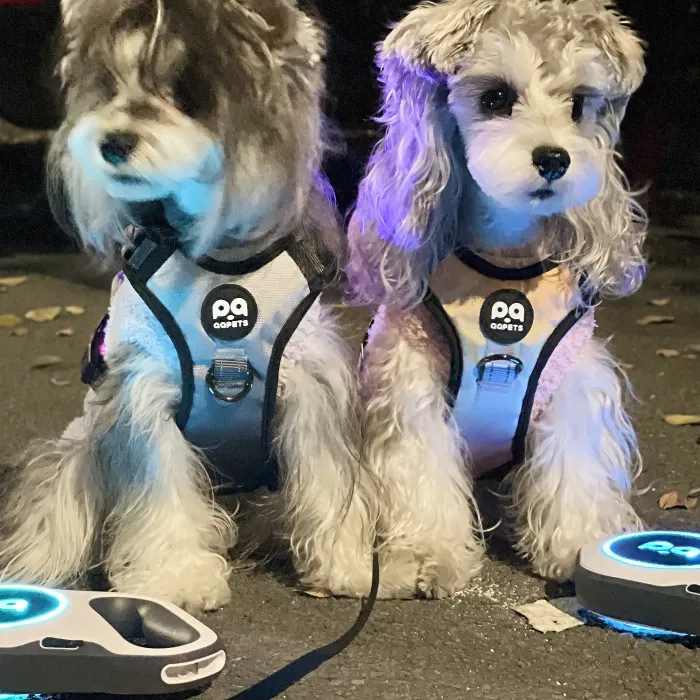
Types and Varieties of LED Harnesses: A Product for Every Dog and Every Need
A successful product line cannot be one-size-fits-all. The dog market is incredibly diverse, spanning dozens of breeds with different body shapes, sizes, and temperaments, as well as owners with different lifestyle needs. A comprehensive LED harness catalog must reflect this diversity. Offering a well-curated selection allows a distributor to meet the specific demands of their retail clients and, ultimately, the end consumer.
– Back-Clip LED aHarness: This is the most common style. The D-ring for leash attachment is located on the dog’s back, typically between the shoulder blades.
– Best for: Well-trained dogs that do not pull, smaller breeds, and activities like running or jogging where a leash getting tangled in the legs is a concern. The LED elements can be prominently displayed across the chest and back without interference from the leash.
– Business Opportunity: This is the mass-market standard. It’s the go-to choice for the average dog owner and should form the core of any LED harness inventory.
– Front-Clip (No-Pull) LED Harness: The D-ring is located at the center of the dog’s chest.
– Best for: Dogs that pull on the leash. When the dog pulls forward, the front-clip design gently redirects their momentum, turning them back towards the owner. It’s a highly popular training tool.
– Business Opportunity: This is a problem-solving product. Retailers can market this as a “2-in-1 No-Pull Training and Safety Harness.” Integrating bright LED strips onto a no-pull frame creates a high-value product that addresses two major customer pain points simultaneously: pulling and low-light visibility. Offering this variant is a key differentiator.
– Dual-Clip LED Harness: The premium option, featuring both a front and a back D-ring. This offers maximum versatility, allowing the owner to choose the attachment point based on the situation or use a double-ended leash for superior control. For a business, this represents a top-tier product that can command a higher price.

Add Your Heading Text Here
Variety in lighting is a major selling feature, tapping into both safety and personalization.
– Standard Lighting Modes: Virtually all LED harnesses offer a minimum of three modes, controlled by a single button press:
1. Fast Flash: The highest-visibility mode, excellent for catching the attention of drivers in high-traffic urban environments.
2. Slow Flash: A less frantic but still highly visible mode, good for general walking and conserving battery life.
3. Steady On: Provides a constant, solid glow. This is often preferred in quieter settings or for the owner’s own comfort, as a flashing light can be distracting.
– Color Variations: Color is a powerful tool for market segmentation and consumer choice.
– Single-Color Models: The most common and cost-effective approach. Offering a range of 5-7 popular, vibrant colors (e.g., Red, Blue, Green, Pink, Orange, Yellow, White) allows retailers to cater to different customer preferences. Red is often associated with “warning,” while blue and green have a “cool,” futuristic feel.
– RGB (Multi-Color) Models: Higher-end harnesses feature RGB LEDs that allow the user to select from multiple colors within a single harness. For example, one harness might be able to switch between red, green, and blue. This increases the product’s value and appeal.
Size Variations and Breed-Specific Considerations
Entre em contato conosco para personalizar seus acessórios de LED
Improper fit is a primary reason for product returns in the pet clothing and accessory market. An LED harness that is too loose can slip off, while one that is too tight will chafe and cause discomfort. Providing a clear, comprehensive sizing structure is essential for business success.
– Standard Sizing (XS, S, M, L, XL): A 5-point sizing system is the industry standard. Each size must have multiple points of adjustment (typically around the neck and chest) to ensure a snug but comfortable fit.
– Clear Sizing Charts: As a manufacturer, providing your B2B clients with detailed sizing charts is critical. These charts must include both weight recommendations (e.g., Small: 10-20 lbs) and, more importantly, precise girth measurements (e.g., Small: Chest Girth 15-22 inches). Empowering your retailers with this information helps them guide their customers to the correct purchase, reducing returns and increasing satisfaction.
– Breed-Specific Designs: While not always necessary, considering the unique body shapes of certain breed categories can be a valuable niche strategy. For example:
– Deep-Chested Breeds (e.g., Greyhounds, Dobermans): Require harnesses with a longer chest strap.
– Barrel-Chested Breeds (e.g., Bulldogs, Pugs): Need harnesses with wider neck and chest straps to prevent restriction.
– “Long” Breeds (e.g., Dachshunds): Benefit from harnesses that distribute pressure over a longer section of their body.
Offering a “Bulldog Fit” or “Deep-Chest Fit” LED harness can capture a lucrative and often underserved segment of the market.
Material Combinations: The Foundation of Quality
The materials used in an LED harness determine its durability, comfort, and breathability. Integrating electronic components requires careful material selection.
– Nylon Webbing: This is the workhorse material for most dog harnesses and leashes. It is extremely strong, durable, and relatively inexpensive. For LED harnesses, a soft, high-density weave is preferred to prevent chafing. The LED strips or fiber optics are typically stitched securely onto the nylon base.
– Mesh Fabric: A padded mesh interior is a sign of a higher-quality, comfort-focused harness. The mesh allows for air circulation, preventing the dog from overheating and reducing the chance of skin irritation, especially on long walks. Combining a strong nylon exterior with a soft mesh interior offers the best of both worlds: durability and comfort.
– Neoprene Padding: Often used to pad the chest plate or straps, neoprene is the soft, flexible, water-resistant material used in wetsuits. It provides excellent cushioning and is gentle on the dog’s skin and fur, making it a premium feature for active dogs.
– Reflective Accents: In addition to the active LED lighting, high-quality harnesses will incorporate passive reflective stitching or trim. This provides a backup layer of safety, ensuring the dog remains visible to headlights even if the battery runs out. This dual-safety system is a powerful marketing point.
Specialty Designs for Different Activities
Catering to specific consumer lifestyles allows a brand to position its products as specialized gear rather than generic accessories, justifying a higher price.
– Urban Walking: These harnesses prioritize maximum brightness and eye-catching flash patterns to compete with city lights and traffic. They may also feature sleeker, more stylish designs and a wider range of fashion colors. App-controlled features are most popular with this demographic.
– Hiking and Trail Use: Durability and weatherproofing are paramount. These designs will feature rugged, ripstop nylon, reinforced stitching, IPX7 waterproof ratings, and often a handle on the back to help lift the dog over obstacles. The LED light here is crucial for keeping track of a dog on a dark trail. Earth-tone colors (e.g., forest green, slate grey) combined with a bright orange or green light are popular.
– Hunting: For hunting dogs used in low-light conditions, a “blaze orange” or “camo” harness with an ultra-bright, steady-on LED light is a vital piece of safety equipment. It ensures the dog is not mistaken for game and is always visible to its handler. Durability and a snag-free design are essential.
By developing a product matrix that considers clip type, lighting options, sizing, materials, and intended activity, a manufacturer like qqpets can provide its B2B partners with a truly comprehensive and market-beating catalog of LED dog harnesses.
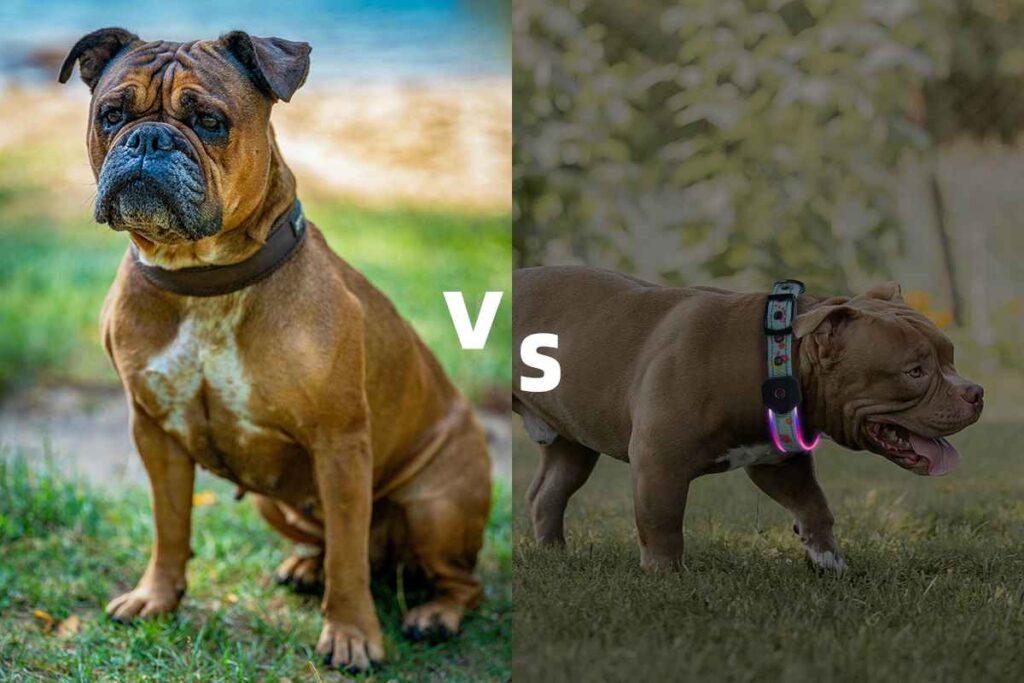
Manufacturing Process and Quality Control: The Blueprint for a Superior LED Harness
For a B2B partner, the promises made in a product catalog are only as good as the manufacturing processes that stand behind them. A beautiful design can be undone by a weak seam, and brilliant technology can be nullified by poor-quality components. This section provides a transparent look into the factory floor and the quality assurance protocols that are essential for producing a reliable, durable, and safe LED dog harness. Understanding this process empowers distributors and retailers to vet suppliers effectively and confidently stand behind the products they sell.
Raw Material Selection and Evaluation: The Foundation of Quality
The manufacturing journey begins long before the first stitch. It starts with the scrupulous selection and evaluation of every single raw material. A premium product cannot be built on a foundation of subpar components. This initial stage, known as Incoming Quality Control (IQC), is arguably the most critical step in preventing downstream failures.

– Fabric and Webbing: We don’t just order “nylon webbing”; we specify high-density, soft-weave nylon with a specific denier count and tensile strength. Each batch is tested for colorfastness (to prevent dye from bleeding onto a dog’s fur), abrasion resistance (to ensure it doesn’t fray with use), and tensile strength using a tensionometer. For materials like mesh and neoprene, we evaluate padding thickness, breathability (airflow rate), and the quality of the stitching that binds them.
– Hardware (Buckles, D-Rings, Adjusters): Plastic buckles are a common point of failure. That’s why top-tier manufacturers often use branded components from trusted suppliers like Duraflex® or specify buckles made from POM (Polyoxymethylene), a high-strength engineering thermoplastic that withstands extreme temperatures and impacts far better than standard polypropylene. Metal D-rings are subjected to salt spray tests to check for corrosion resistance and pull tests to ensure the weld points can withstand hundreds of kilograms of force, far exceeding the pull of even the strongest dog.
– Electronic Components: The LED strips, circuit boards (PCBs), and batteries are sourced from specialized electronics suppliers who are themselves ISO 9001 certified. We evaluate LEDs not just for their color and mode, but for their lumen output consistency and Kelvin color temperature to ensure every harness in a batch has the same brightness and hue.
A dedicated IQC team inspects a statistically significant sample from every batch of raw materials before they are accepted into the main production inventory. Any batch that fails to meet these stringent criteria is rejected and returned to the supplier. This prevents flaws from ever entering the assembly line.
LED Component Manufacturing and Integration
Integrating sensitive electronics into a textile product designed for rugged use is a highly skilled process. The goal is to make the technology feel seamless and be robust enough to be unnoticeable to the dog and fail-proof for the owner.
1. Preparation of the LED Assembly: The LED strip or fiber optic tube is cut to the precise length required for each harness size. The ends of the fiber optic tubes are polished to ensure maximum light transmission from the LED source. The LED driver, circuit board, and battery are pre-assembled and soldered in a dust-controlled environment.
2. Creation of the Channel: On the main harness body, dedicated channels or tunnels are stitched to house the LED/fiber optic strips. The stitching must be perfectly parallel and use high-strength, weather-resistant thread (like bonded nylon) to avoid any chance of the strip coming loose.
3. Secure Integration: The LED assembly is carefully threaded through these channels. The electronics housing unit—containing the battery and control button—is then securely integrated into the harness design. This is often done by creating a dedicated, reinforced pocket or by securely stitching a purpose-built case onto the harness frame. The design must ensure the housing does not shift or cause pressure points for the dog.
4. Connection and Sealing: The final connections are made, and the entire electronic system is sealed to achieve its specified IP water resistance rating. This involves fitting silicone gaskets, applying waterproof adhesives, and ensuring all entry points are hermetically sealed.
This meticulous integration process ensures that the finished product functions as a single, durable unit, not as a standard harness with fragile electronics simply attached as an afterthought.
Quality Testing Protocols for Electrical Components
Before a harness can be approved, its electronic heart must undergo a battery of tests to guarantee safety, reliability, and performance.
– Battery Cycle Testing: A sample of batteries from each batch is put through an automated charge/discharge cycle test. A quality battery should maintain at least 80% of its original capacity after 300-500 full cycles. This ensures the user gets a long and useful life from their rechargeable harness.
– Charging Port Durability Test: The USB charging port is subjected to thousands of automated plug/unplug cycles to simulate real-world use and ensure the connection point remains solid and functional over time.
– Operational Function Test: Every single finished harness is individually powered on. An inspector cycles through every lighting mode (fast flash, slow flash, steady on) to verify that the button and the circuit board are working correctly.
– Lumen and Run-Time Test: Sample units are placed in a dark room with a photometer to measure their light output (lumens), ensuring it meets the brightness specification. They are then left on in each mode to verify the advertised battery run-time (e.g., “up to 12 hours on slow flash”).
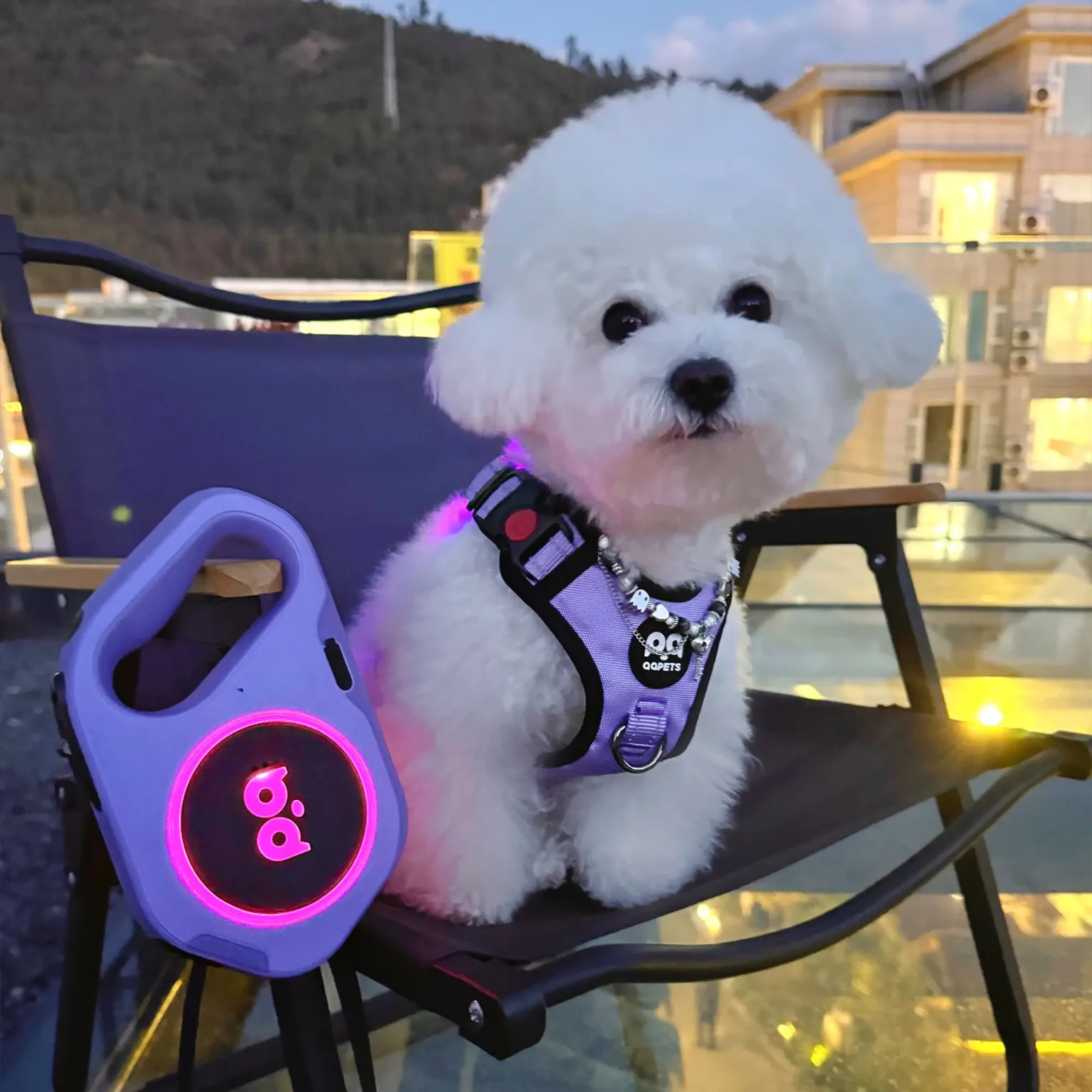
Durability and Stress Testing Methods
A dog’s life is demanding. A harness must withstand pulling, lunging, abrasion from rolling on the ground, and exposure to the elements. Physical stress testing is where we simulate these conditions to find any potential weaknesses.
- Tensile Strength Test: The finished harness is mounted on a tensile testing machine. A calibrated force is applied to the D-ring until a failure occurs. The breaking point must significantly exceed industry standards and the force any dog could realistically generate. This tests the strength of the webbing, the stitching, and the D-ring itself.
- Abrasion Resistance Test: Fabric samples and finished harnesses are subjected to a Martindale abrasion tester, which rubs the material with a standard abrasive surface for thousands of cycles to assess how well it resists fraying and wear.
- Environmental Chamber Testing: Sample harnesses are placed in an environmental chamber where they are exposed to extreme high and low temperatures, as well as high humidity, to ensure the materials do not become brittle or weak and the electronics continue to function under adverse weather conditions.
- Shake and Drop Tests: To simulate the shocks and impacts of daily use, harnesses are subjected to standardized vibration and drop tests to ensure internal connections remain secure and the housing doesn’t crack.
Quality Assurance Systems in Mass Production
Maintaining quality across an order of thousands of units requires a systematic approach. This is achieved through a multi-stage Quality Assurance (QA) system, often governed by the AQL (Acceptable Quality Limit) standard.
– In-Process Quality Control (IPQC): Quality is not just checked at the end; it’s built in at every stage. We station QA inspectors at critical points on the assembly line. They check stitching quality as the harness is being sewn, verify the correct integration of the LED channel, and ensure hardware is attached securely. This catches errors early, saving time and resources and improving overall quality.
– Final Quality Control (FQC): Once a batch of harnesses is fully assembled, a dedicated FQC team performs a final, comprehensive inspection based on the AQL standard. They randomly select a statistically significant number of units from the batch and check them against a detailed checklist:
– Aesthetics: Check for dirt, stains, loose threads, or cosmetic defects.
– Functionality: Test the buckle, all adjustment points, and every light mode on every unit tested.
– Measurements: Verify that the dimensions match the sizing specifications.
– Packaging: Ensure the product is correctly folded, labeled, and placed in its packaging with the correct user manual and charging cable.
Only when a batch passes this final rigorous inspection is it approved for shipment. For B2B clients, we can provide a copy of the final inspection report for their specific order, offering an unparalleled level of transparency and peace of mind.
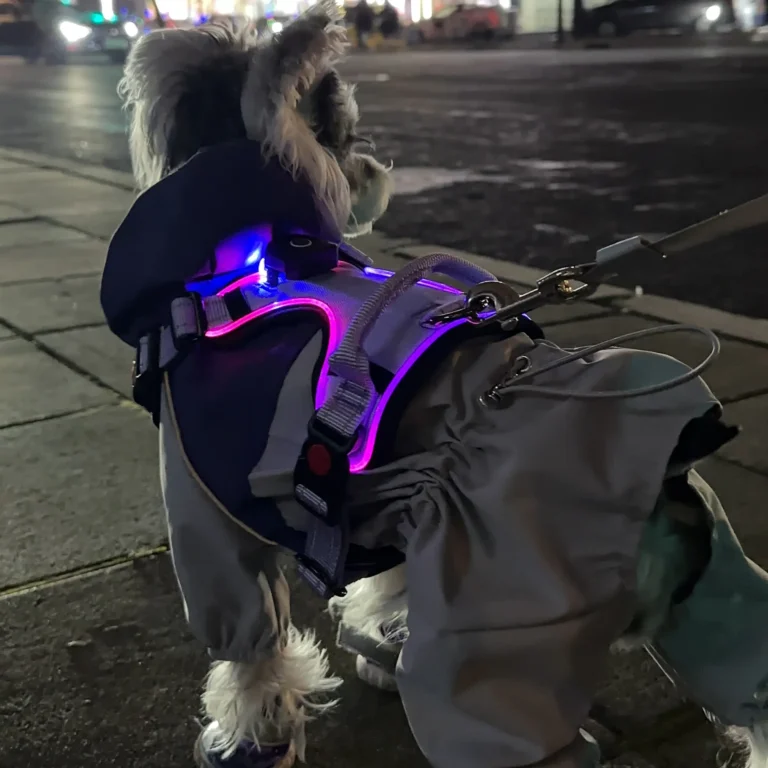
Safety Standards and Certifications: Navigating the Global Compliance Landscape
placing a product on the market in Europe, North America, or Australia is not just about quality—it’s about legality. Selling electronic products that are not certified to meet local safety standards can result in product recalls, hefty fines, and irreparable brand damage. A competent manufacturing partner acts as a guide through this complex landscape, providing not just the products, but the certified documentation required for market access.
International Safety Standards for Pet Products
Unlike products for human children, there are few legally mandated, universal safety standards specifically for pet accessories. However, responsible manufacturers bridge this gap by voluntarily adhering to standards from adjacent industries to ensure safety. This includes:
– Material Safety: Testing textile and plastic components against standards like REACH (Registration, Evaluation, Authorisation and Restriction of Chemicals) in Europe or California Proposition 65 in the USA. This ensures materials are free from harmful levels of lead, phthalates, BPA, and other hazardous substances.
– Mechanical Safety: Applying principles from toy safety standards to ensure there are no sharp edges, small parts that could easily detach and become a choking hazard, or entrapment risks.
A supplier that can provide test reports for these standards demonstrates a commitment to safety that goes beyond the bare minimum.
Electrical Safety Certifications Required for Different Markets
This is the most critical area of compliance for an electronic product like an LED harness. The required certifications are market-specific.
– CE Marking (for the European Union): This is a mandatory mark indicating conformity with health, safety, and environmental protection standards for products sold within the European Economic Area. For an LED harness, it involves compliance with at least two key directives:
– Low Voltage Directive (LVD): Ensures the product is safe from electrical shock.
– Electromagnetic Compatibility (EMC) Directive: Ensures the device does not interfere with other electronic devices and is not itself affected by interference.
– UKCA Marking (for Great Britain): Post-Brexit, the UKCA mark has replaced the CE mark for products sold in England, Scotland, and Wales, following similar technical requirements.
– FCC Declaration of Conformity (for the USA): The Federal Communications Commission requires that any electronic device that can oscillate above 9 kHz (which includes all LED drivers and especially any with Bluetooth) be tested to ensure it does not cause harmful electromagnetic interference. An FCC logo on the product is a legal requirement for sale in the US.
– RoHS (Restriction of Hazardous Substances): Originating in the EU but now a global benchmark for environmental responsibility, the RoHS directive restricts the use of specific hazardous materials found in electrical and electronic products, including lead, mercury, and cadmium. RoHS compliance is a powerful indicator of a high-quality, eco-conscious supply chain.
IP Ratings and Water Resistance Standards
As discussed in the technology section, the IP Rating (Ingress Protection) is the universal standard for defining a product’s resistance to solids and liquids. For a B2B buyer, the key is to understand that a legitimate IP rating isn’t just a claim; it’s a verifiable test result from a certified laboratory. A reliable manufacturer should be able to provide the official test report that details the testing procedure and confirms the product achieved the claimed rating (e.g., IPX7). This report is proof that the harness’s waterproofing is robust and has been professionally validated.
Battery Safety Regulations: A Crucial, Often Overlooked Detail
Lithium-ion batteries are classified as dangerous goods for shipping and have strict safety regulations. Non-compliance is not an option.
– IEC 62133: This is the foremost international safety standard for rechargeable batteries. It involves rigorous testing for short-circuits, overcharging, and performance under heat. Compliance is essential for demonstrating battery safety.
– UN38.3: This is a United Nations standard that is legally required for transporting lithium batteries by air, sea, or land. It subjects batteries to a gauntlet of tests simulating transport conditions (vibration, shock, altitude, etc.). Without a UN38.3 test report, international shipments of your products can be seized by customs or rejected by carriers.
– MSDS (Material Safety Data Sheet): This document details the chemical properties of the battery and provides handling and emergency information. It is required by all shipping companies to accompany any shipment containing lithium batteries.
A supplier who proactively provides a full set of battery certifications (IEC 62133, UN38.3, MSDS) demonstrates a high level of professionalism and understanding of the global supply chain.
Documentation and Certification Process for Importers
For a brand owner in the USA, Europe, or Australia, “certificate fraud” is a legitimate fear. A trustworthy manufacturer demystifies this process and provides a transparent documentation package. This “Compliance Package” should include:
– High-resolution copies of all relevant certificates (CE, FCC, RoHS).
– The full, multi-page test reports from the accredited third-party labs that issued the certificates.
– The complete set of battery safety documentation (IEC 62133 report, UN38.3 report, MSDS).
– A formal Declaration of Conformity (DoC), which is a document where the manufacturer formally declares compliance with the required standards.
Crucially, a B2B buyer should be able to verify this information. Certificates have unique report numbers and are issued by specific labs (e.g., SGS, TÜV, Intertek). A buyer can contact the lab directly and quote the report number to confirm its authenticity. A supplier who welcomes this verification is a supplier you can trust. This process transforms the importer’s role from a hopeful buyer to an informed partner, fully equipped to meet their legal obligations and build a reputable brand.
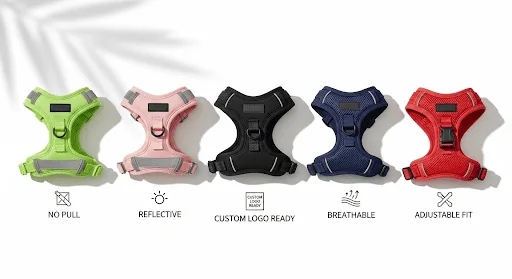
Market Analysis and Consumer Trends: Capitalizing on Opportunity
Understanding how a product is made and certified is essential for procurement. Understanding who buys it and why is essential for sales and marketing success. This section provides the market intelligence that a business partner needs to effectively position, price, and promote LED dog harnesses in their target region.
Global Market Size and Growth Rate
Regional Differences in Adoption and Usage
A successful global strategy requires a nuanced, regional approach. Consumer behavior and market maturity vary significantly across key export destinations.
– North America (USA & Canada): This is the largest and most mature market. High disposable income, a massive population of dog owners (over 65 million households in the US own a dog), and a strong safety-conscious culture drive demand. Consumers here are receptive to new technology, value convenience (USB rechargeable is a must), and are heavily influenced by social media trends and brand storytelling. The “no-pull” front-clip designs are particularly popular in this training-focused market.
– Europe (Germany, UK, France, Scandinavia): This region is a close second in market size and is often a leader in regulatory standards (CE, RoHS). European consumers place a very high value on product durability, eco-friendliness, and proven safety certifications. There is strong seasonal demand tied to the very short daylight hours in the winter. Utilitarian and robust designs for hiking and all-weather use perform exceptionally well, particularly in Scandinavian countries and Germany.
– Australia & New Zealand (AUE): While a smaller market by population, it has one of the highest per-capita pet ownership rates in the world. An active, outdoor lifestyle is central to the culture, creating strong demand for durable, waterproof, and high-visibility gear for evening beach runs and trail walks. Consumers are quality-conscious and willing to pay a premium for products built to last in rugged conditions.
Understanding these regional preferences allows a distributor to tailor their inventory, ordering more no-pull models for the US, more rugged/waterproof models for Australia, and ensuring all products destined for Europe have impeccable CE and RoHS documentation.
Consumer Demographics and Buying Patterns
Who is the typical buyer of an LED dog harness? Identifying this persona helps in crafting targeted marketing messages.
– The Safety-Conscious Suburbanite: This is the core demographic. They are typically female, aged 30-55, and view their dog as a cherished family member. They live in suburban areas with street traffic and walk their dog in the early morning or evening after work. Their primary motivation is **peace of mind**. Marketing to this group should focus on safety, reliability, and ease of use. Testimonials and videos showing the harness’s visibility from a distance are highly effective.
– The Urban Tech-Savvy Millennial: Aged 25-40, this consumer lives in a city, is digitally native, and is drawn to products that blend technology with style. They are early adopters who appreciate app-controlled features, customizable RGB colors, and a sleek, modern aesthetic. Their motivation is a mix of **safety and self-expression**. They are active on social media and are likely to be influenced by pet “influencers.” Marketing should highlight the “cool factor,” customization, and high-tech features.
– The Outdoor Adventurer: This demographic is of any age but shares a passion for hiking, camping, and outdoor activities. They are highly practical and demand performance. Their key purchase drivers are **durability, battery life, and extreme weatherproofing (IPX7)**. They are less concerned with fashion colors and more concerned with function. Marketing should showcase the harness in rugged environments and emphasize its robust construction and reliability.
Seasonal Demand Variations
The sale of LED dog harnesses is highly seasonal, and smart inventory planning is key to maximizing profit.
The peak sales season begins in late summer/early autumn (August-September) as retailers stock up for the coming months. Consumer demand surges from October through February in the Northern Hemisphere. This is directly correlated with the end of Daylight Saving Time and the onset of winter, when days become significantly shorter and most after-work walks happen in the dark.
There is a secondary sales spike during the holiday season (November-December) as the product is an excellent and relatively affordable gift for dog owners.
A savvy B2B buyer would place her primary bulk orders in Q2/early Q3 to ensure inventory arrives in her warehouse well before the October peak season begins. A smaller re-order might be placed in late October if initial sales are strong. Understanding and planning for this cycle is crucial to avoid missing the most profitable sales window, a major pain point for importers.
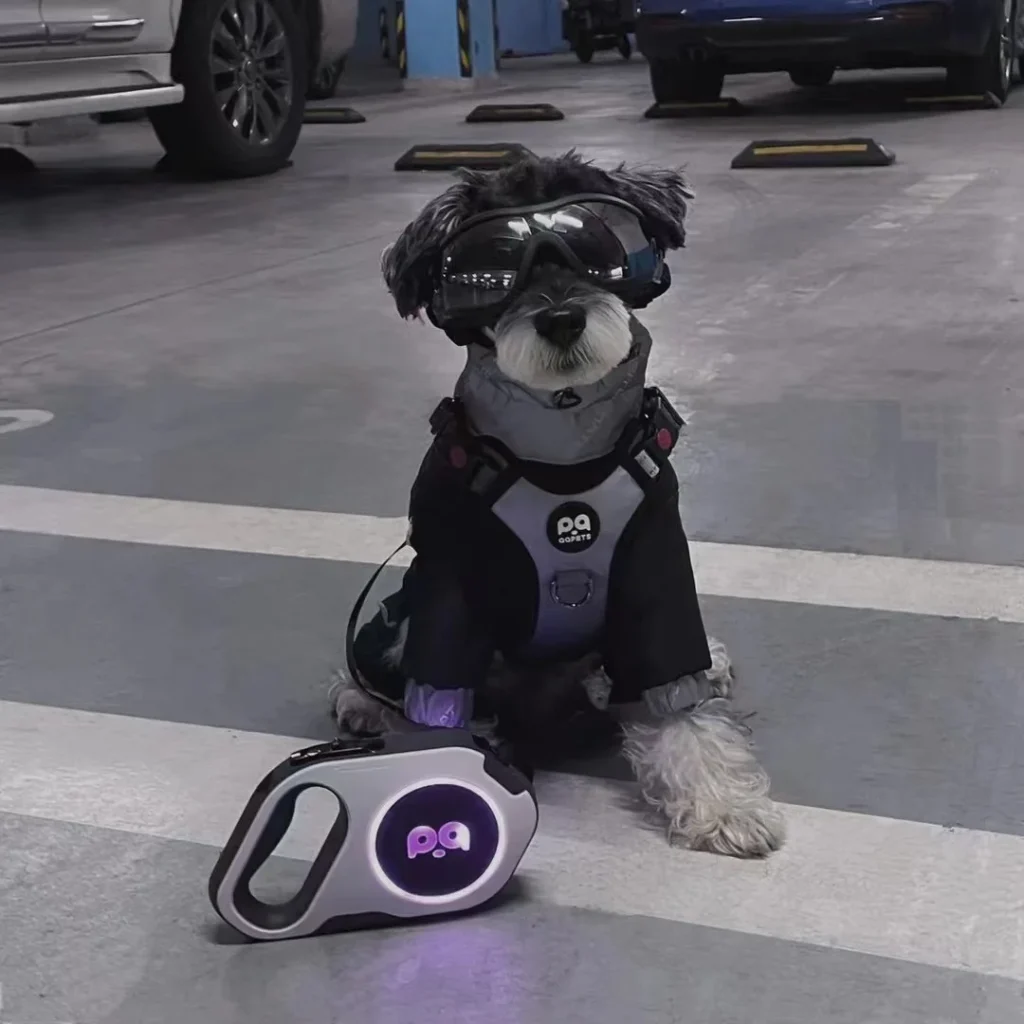
Price Sensitivity and Perceived Value Analysis
the typical customer, seeks competitive B2B pricing, she is also sensitive to quality. This means she is not looking for the absolute cheapest product, but the product that offers the best value proposition. In the LED harness market, perceived value is built on a few key pillars:
– Tiered Pricing Structure: The market supports a clear “good, better, best” model.
– Good (Entry-Level): Simple, single-color, button-cell battery-powered harnesses. These have the lowest price but also the lowest perceived value and are susceptible to high price competition.
– Better (Mid-Range): The sweet spot of the market. USB-rechargeable, high-quality nylon/mesh construction, multiple modes, offered in several single colors, with IPX4-IPX5 water resistance. This is the product that will appeal to the core “Safety-Conscious Suburbanite.”
– Best (Premium): App-controlled RGB colors, dual-clip (no-pull) functionality, neoprene padding, IPX7 waterproofing, and potentially integrated with other tech like GPS. This commands the highest price and margin, appealing to tech-savvy and high-income consumers.
– Justifying the Premium: A retailer can command a higher price point (and a manufacturer can justify a higher B2B price) by clearly communicating the features that build value: a verifiable IPX7 rating, the inclusion of a handle, the use of branded hardware, the safety certifications of the battery, and the softness of the neoprene padding.
– The Cost of “Too Cheap”: A harness that is priced too low signals poor quality to a discerning consumer. It raises questions about battery safety, durability, and whether it will even work after a few weeks. In the safety product category, consumers are often willing to pay a few dollars more for the assurance of reliability and safety. A brand that competes solely on being the cheapest will struggle with returns and negative reviews, ultimately damaging its reputation.
For a business owner, the strategy should be to focus on the “Better” and “Best” tiers, where quality and features can be used to build a strong brand, command healthy profit margins, and foster customer loyalty.
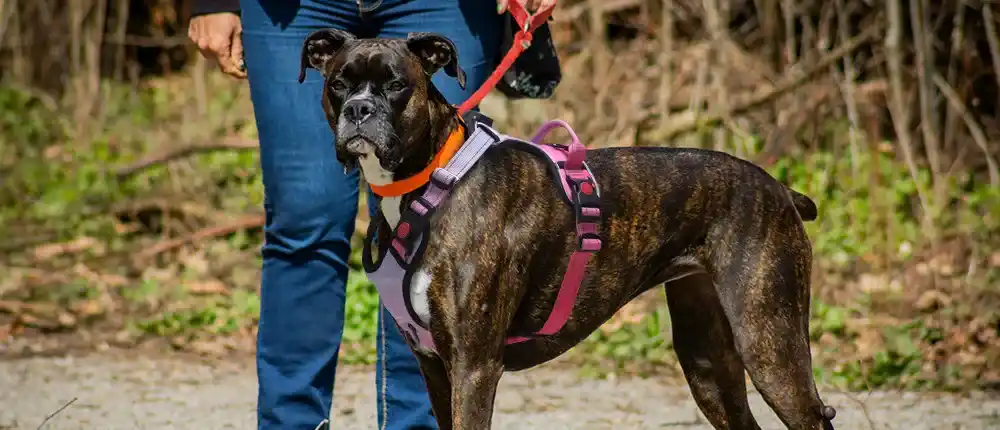
Business Opportunities for Retailers and Distributors: Turning Illumination into Income
Understanding the technology and quality of a product is foundational. For a business owner, however, the paramount question is: “How will this product grow my business?” LED dog harnesses are not just an incremental addition to a product catalog; they represent a strategic opportunity to enhance brand image, capture new customer segments, and significantly boost profit margins. This section outlines the concrete business advantages of investing in a high-quality line of LED pet products.
Profit Margin Analysis: Beyond the Standard Mark-Up
- Elevated Perceived Value: The integration of technology—lighting, rechargeable batteries, multiple modes—immediately elevates the product’s perceived value in the consumer’s mind. It’s no longer just a restraint; it’s an active safety device and a cool gadget. This allows for a significantly higher retail price point that consumers are willing to pay. A standard harness might retail for $15-$25, whereas a quality USB-rechargeable LED harness can easily command a price of $35-$55 or more.
- Calculating the Margin Advantage: Let’s consider a hypothetical example. A standard harness might have a B2B cost of $5 and retail for $15, yielding a $10 gross profit. A quality USB-rechargeable LED harness might have a B2B cost of $12 but retails for $40. This yields a $28 gross profit. Even though the initial investment is higher, the Return on Investment (ROI) and absolute profit per unit are substantially greater. Typically, retailers can expect to achieve a gross margin that is 1.5x to 2.5x higher on an LED harness than on a comparable standard model.
- Reduced Price Compression: The market for standard harnesses is saturated, leading to intense price competition and downward pressure on margins. The LED harness market, while competitive, is more feature-driven. Brands can differentiate on brightness, battery life, IP rating, and design, allowing them to defend their price points more effectively against low-cost competitors.

Cross-Selling and Up-Selling Opportunities
An LED harness is a gateway product that opens up numerous opportunities to increase the Average Order Value (AOV) for both B2B and B2C sales.
– The Illuminated Set: The most natural cross-sell is the matching **LED leash and LED collar**. A customer who buys into the concept of an illuminated harness is the perfect candidate to purchase a fully coordinated safety set. Offering a small “bundle and save” discount can be a powerful incentive.
– Up-Selling to Premium Tiers: In-store or online, a “good, better, best” display strategy works wonders. When a customer is considering a basic model, sales staff or website recommendations can highlight the advantages of a premium model—”For just $10 more, you get a fully waterproof design and 3 extra hours of battery life”—effectively up-selling to a higher-margin product.
– Accessory Attachment: LED harnesses can be offered with complementary non-LED accessories. This includes items like attachable poop bag dispensers, reflective leash wraps, or clip-on safety lights for the owner’s jacket, creating a comprehensive “Night Safety Kit.”
Private Labeling and Customization Options: Building Your Brand
For a business ,which thrives on rebranding products for the US market, the ability to customize is not a bonus—it’s a core requirement. A true factory partner must offer robust Original Equipment Manufacturer (OEM) and Original Design Manufacturer (ODM) capabilities.
– Logo Application: The most fundamental customization is adding the brand’s logo. A quality manufacturer should offer multiple methods to suit different brand aesthetics and price points:
– Silk-Screen Printing: A cost-effective method for applying a logo directly onto the nylon webbing.
– Woven Label: A classic fabric label stitched onto the harness, offering a premium, traditional look.
– Rubber/PVC Patch: A modern, durable 3D logo that can be stitched onto the harness, often on the chest plate or back, for a rugged, high-end feel.
– Laser Engraving: On metal hardware like buckles, a laser-engraved logo provides a subtle and permanent mark of quality.
– Custom Packaging: The unboxing experience is a crucial part of branding. A factory should be able to produce custom-printed retail boxes, backing cards, or hang tags featuring the client’s branding, product information, and barcodes (UPC/EAN).
– Pantone® Color Matching: Move beyond standard colors. For larger orders, a manufacturer can dye the nylon webbing and other materials to match a brand’s specific Pantone® color codes, ensuring perfect brand consistency across a product line.
– ODM – Design Modifications: For strategic partners, true ODM services can be offered. This could involve modifying a strap design for a specific breed, developing a unique buckle, or integrating a new type of LED technology based on the client’s market feedback and brand vision.
This level of customization allows a B2B client to transform a high-quality “generic” product into a unique offering that builds their brand equity and stands out on the retail shelf.
Bulk Ordering Advantages and Inventory Management
As a procurement officer, understands the economies of scale. A factory partner should have a clear and advantageous pricing structure for bulk orders.
– Tiered Pricing: A transparent pricing table should show how the per-unit cost decreases as the order quantity increases (e.g., at 500, 1000, 3000, and 5000 units). This incentivizes larger orders and helps clients plan their inventory investments.
– Optimized Shipping Costs: The cost of international shipping per unit drops significantly with larger volume. A factory can help a client calculate the most cost-effective order quantity by consolidating shipments into a full container load (FCL) versus less-than-container-load (LCL) shipments.
– Production Prioritization: Larger, recurring orders from established partners often receive priority scheduling in the production queue, leading to more reliable lead times and better inventory management for the client, helping them avoid the pain of missing peak sales seasons.
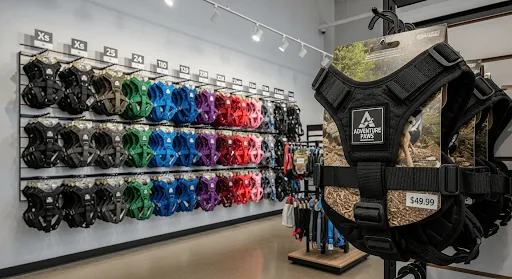
Competitive Landscape: Navigating a Crowded Field
Success in the LED harness market requires not only a great product but also a keen awareness of the competition. A proactive manufacturing partner should be able to provide its clients with an honest assessment of the market landscape, helping them to carve out a unique and defensible position. For a new brand, entering the market with a clear strategy is the key to avoiding a race to the bottom on price.
Major Players in the LED Pet Accessories Market
The competitive field can be segmented into three primary tiers:
1. Established Pet Brands (e.g., PetSafe, Ruffwear – in principle): While not all major brands have heavily invested in LED, when they do, they enter with significant advantages: massive distribution networks, strong brand recognition, and large marketing budgets. Their products are typically well-made, safety-certified, and priced at a premium. Their weakness can sometimes be a slower pace of innovation compared to more agile startups.
2. Tech-Focused Niche Brands (e.g., Noxgear, Illumiseen): These are often the pioneers and innovators in the space. They live and breathe high-visibility gear. Their marketing is sharp, their products are feature-rich (e.g., 360-degree visibility, multi-color modes), and they have a loyal following among tech enthusiasts and serious athletes. They command premium prices and are the ones setting the benchmark for performance.
3. Low-Cost Marketplace Sellers (Amazon, Alibaba, eBay): This is the most crowded segment. It is populated by countless overseas sellers and domestic importers competing almost entirely on price. Their products often feature lower-quality materials, replaceable coin-cell batteries, questionable durability, and a lack of verifiable safety certifications. While they capture the budget-conscious consumer, they suffer from high rates of negative reviews and product failures.
Comparative Analysis of Features and Pricing
Competitor Tier | Price Point | Key Features | Quality & Durability | Primary Selling Point |
Established Brands | High ($45-$70) | Reliable, well-integrated, often USB-C, strong brand name, lifetime warranties. | Excellent materials, certified, but may not be the brightest or most feature-rich. | Trust & Reliability |
Tech-Niche Brands | Very High ($60-$90) | 360° illumination, app control, multi-color, ultra-bright, patented designs. | Exceptional, built for performance, often IPX7 rated. | Performance & Innovation |
Marketplace Sellers | Low ($10-$25) | Basic modes, often replaceable batteries, exaggerated claims. | Inconsistent, prone to failure, not waterproof, weak materials. | Lowest Price |
Market Positioning Strategies
A new brand cannot be everything to everyone. It must choose a clear identity. A factory partner can help produce a product line that supports one of these winning positions:
– “The Ultimate Safety Champion”: This position focuses entirely on safety above all else. The marketing message is about peace of mind. The product must have the brightest LEDs, the longest-lasting battery, a fail-safe buckle, and prominently feature its CE/FCC/RoHS certifications. Reflective stitching is a must. The target audience is the safety-conscious suburban family.
– “The Urban Stylist”: This position targets the fashion-forward, tech-savvy millennial. The focus is on aesthetics and features. The product should have app-controlled RGB colors, sleek designs, and unique “rainbow” or “pulse” modes. The marketing would be highly visual and social-media-driven, focused on creating a “cool” look.
– “The Rugged Adventurer”: This brand is for the outdoor enthusiast. The product must be exceptionally durable, have a handle on the back, and be constructed from ripstop materials. Marketing would feature the harness on mountains and trails, surviving mud, rain, and snow.
By choosing one of these positions, a brand can create a focused marketing message and product line that resonates strongly with a specific target audience.
Once a position is chosen, the brand needs a concrete USP to anchor its marketing. A versatile manufacturer can help build a product that delivers on these promises:
– “See Your Dog from 500 Meters Away – The Brightest LED Harness on the Market.”
– “**15-Hour Battery Life** on a Single Charge – Lasts for a Week of Walks.”
– “**360-Degree Illumination** with Our Patented Fiber Optic Design.”
– “The First Harness with Eco-Friendly Materials and a Recyclable Battery.”
– “The Featherlight LED Harness – So Comfortable, Your Dog Won’t Know It’s There.”
A USP must be specific, desirable to the customer, and, most importantly, **true**. A manufacturer partner’s role is to provide the engineering and quality to make these claims verifiable.
Unique Selling Propositions (USPs) for Different Brands
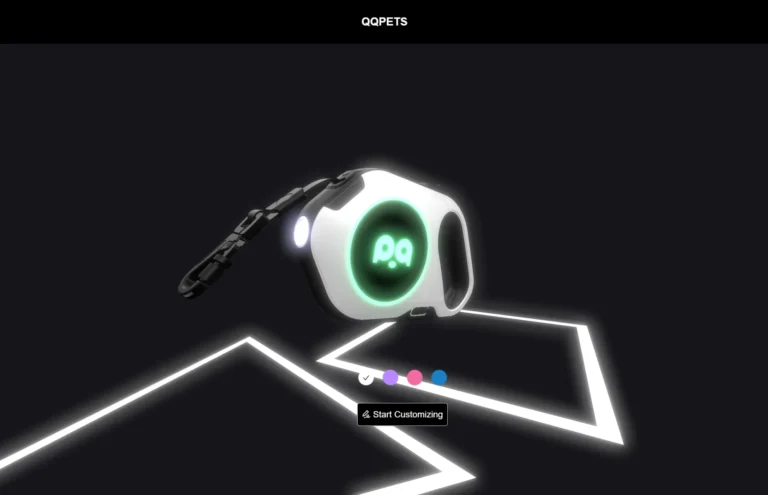
Emerging Competitors and Market Disruptors
The market does not stand still. A forward-looking brand owner must be aware of future threats and opportunities.
– The Rise of Lookalikes: As soon as a successful design emerges, low-cost factories will attempt to create copies. The defense against this is to build a strong brand, emphasize verifiable quality (certifications, material specs), and continue to innovate. A cheap copy cannot replicate a brand’s reputation for quality and customer service.
– The All-in-One Device: The next wave of disruption will come from products that integrate LED lighting with GPS tracking and activity monitoring into a single harness. While currently expensive and niche, the cost of this technology is falling. A brand entering the market now should consider a future roadmap that might include such a high-end “smart harness,” and a factory partner should have the R&D capability to explore these integrations.
By understanding this competitive landscape, a brand owner can enter the market not with fear, but with a precise strategy for success.

Customer Education and Support: Ensuring a Positive Post-Purchase Experience
A sale is not complete when the customer’s payment is received. True brand loyalty is built in the post-purchase phase. If customers are confused about how to use, fit, or care for their LED harness, it can lead to frustration, negative reviews, and costly returns. A great manufacturer partner helps its B2B clients by providing the information and support needed to educate the end-user, creating a seamless and positive experience from the factory to the dog park.
Proper Sizing and Fitting Guidelines
This is the #1 cause of returns for any wearable pet product. Preventing this problem starts with clear and effective communication.
– The Measurement-First Approach: The most important message to communicate to customers is: “Don’t guess the size—measure your dog!” A manufacturer should provide its B2B clients with a professionally designed, easy-to-read sizing chart template. This chart must prioritize the chest girth measurement as the primary determinant of size, with weight ranges offered only as a secondary guide.
– Visual “How-To” Guides: A simple, illustrated graphic or a short (15-second) video showing exactly where to measure the dog’s chest (right behind the front legs) is incredibly effective. This content can be used on the retailer’s product page, in social media posts, and even printed as a QR code on the packaging.
– The “Two-Finger Rule”: Educate customers on the proper fitting technique: once the harness is on and all straps are adjusted, they should be able to comfortably slip two fingers between the harness and the dog’s body at any point. This ensures the harness is secure but not restrictive.
Battery Maintenance and Replacement Information
Proper battery care is essential for product longevity and customer satisfaction. Clear instructions prevent user error that could be mistaken for a product defect.
– For USB Rechargeable Models:
– Initial Charge: Advise customers to fully charge the harness before its first use. A quality harness should have an indicator light that changes color (e.g., from red to green) when fully charged.
– Charging Best Practices: Instruct users to only use the provided USB cable and a standard 5V USB power source (like a computer or phone adapter).
– Long-Term Storage: For customers who may only use the harness seasonally, advise them to give it a full charge every 2-3 months during storage to maintain battery health. Storing a lithium-ion battery in a fully depleted state can permanently damage it.
– For Replaceable Battery Models:
– Battery Type: Clearly state the exact battery type required (e.g., 2x CR2032).
– Safe Replacement: Provide clear instructions, ideally with a diagram, showing how to safely open the battery compartment and insert the new batteries with the correct polarity (+/-). Emphasize the importance of ensuring the compartment is securely closed to maintain water resistance and keep batteries away from pets and children.
Como controlar as luzes?
O controle das luzes é tão fácil quanto apertar um botão! Pressione uma vez para um flash rápido, duas vezes para uma dança lenta, três vezes para manter as coisas estáveis e quatro vezes para dar adeus. Alterne os modos de luz para combinar com sua vibração e cena!

Embalagem
- Arnês de LED para cães
- Manual de instruções
- Cabo USB
- Saco de embalagem translúcido

Arnês de LED para cães vs. Arnês básico para cães
Os arreios de LED para cães e os arreios básicos para cães desempenham papéis essenciais no cuidado com os animais de estimação, mas diferem significativamente em termos de recursos e funcionalidade, atendendo a diferentes necessidades e preferências dos donos de animais.
Os arreios LED para cães são equipados com luzes LED embutidas, aumentando a visibilidade durante as caminhadas noturnas para maior segurança. Eles são fabricados com materiais respiráveis e ecologicamente corretos, garantindo conforto e durabilidade em vários ambientes externos.
Os arreios básicos para cães, embora tenham um design mais simples, oferecem suporte e controle essenciais durante caminhadas ou sessões de treinamento. Eles são fornecidos em vários estilos e materiais, oferecendo aos donos de animais opções práticas com base no tamanho e no comportamento do animal.
Concluindo, os arreios de LED para cães são ideais para os proprietários que priorizam maior visibilidade e recursos de segurança durante as atividades noturnas, enquanto os arreios básicos para cães oferecem simplicidade e funcionalidade para o uso diário e para fins de treinamento.

Avaliações de clientes



SOLICITE UMA COTAÇÃO PARA OBTER MAIS DETALHES
Arnês de LED para cães Fabricante e fornecedor
Como personalizar o arreio de LED para cães
Como um dos principais fabricantes da China, especializado em coleiras, trelas e arreios para cães, temos orgulho de atender a mais de 2.000 pequenas empresas e marcas de produtos para animais de estimação em todo o mundo com nossos serviços de fabricação personalizada. A fabricação sob encomenda (MTO) é a nossa abordagem estratégica de produção, permitindo que os clientes comprem arreios, coleiras, guias e outros produtos para animais de estimação personalizados de acordo com suas especificações. Esse processo de fabricação garante que a produção seja iniciada somente após o recebimento de um pedido confirmado do cliente, mantendo nosso compromisso com a precisão e o atendimento de requisitos específicos.

Arreios, coleiras e guias personalizados de marca própria para cães
Fabricamos uma variedade de arreios, coleiras e guias para cães com marcas personalizadas. Se você quiser adicionar sua própria marca e desenhos aos produtos existentes ou criar um produto completamente novo, oferecemos a flexibilidade necessária para atender às suas necessidades. Atualmente, atendemos a mais de 2.000 clientes de marcas globais com produtos personalizados de acessórios para animais de estimação.
MOQ de Arnês de LED personalizado para cães: 50 unidades/por padrão/por tamanho
Arnês de LED para cães no atacado
Se a quantidade do seu pedido for muito pequena para atender aos padrões de produção personalizados ou se você quiser testar o produto, poderá começar comprando nossos itens de estoque. Essa abordagem não apenas economiza nos custos de aquisição, mas também permite testar o mercado.
MOQ do arnês de LED para cães no atacado: 10 unidades/por padrão/por tamanho

logotipo personalizado
Inicie sua marca
Personalize-o com cores diferentes e suas formas favoritas de acordo com seu logotipo e vamos começar a nos divertir fazendo-o!








Charme diferenciado


Padrões personalizados
Adicione seu próprio toque para tornar o arreio de LED para cães ainda mais exclusivo.
Como fabricante profissional de arreios de LED para cães, basta fornecer o design de sua preferência em formato AI, JPG ou PNG para obter um produto que reflita o estilo exclusivo de sua marca!
Estilos e cores
Acessórios personalizáveis para suas necessidades
Como seu fornecedor confiável de arreios para cães, oferecemos acessórios personalizáveis em uma variedade de cores e estilos. Personalize seus acessórios para que combinem perfeitamente com sua marca com nossos serviços profissionais de personalização.










Embalagem personalizada
Econômico e útil
Geralmente, fornecemos sacos translúcidos em branco gratuitos para embalar o arnês de LED para cães.
O que nossos clientes dizem

Recentemente, comecei a adquirir coleiras e guias para cães da QQPETS para nossa pequena loja de animais. O nível de personalização que eles oferecem é excelente, o que nos permite oferecer produtos exclusivos que se destacam no mercado. Mesmo sendo um cliente novo, tive um serviço de primeira linha e a qualidade dos produtos recebidos superou nossas expectativas, promovendo a confiança em uma parceria de longo prazo.
Kristy Brooks

Como cliente de longa data da QQPETS, sempre me impressionei com a qualidade e a durabilidade de seus produtos para animais de estimação. Seus arreios e coleiras para cães provaram ser confiáveis e confortáveis para nossos animais de estimação. A equipe de atendimento ao cliente está sempre pronta para ajudar, tornando cada transação tranquila e agradável, o que é essencial para manter nosso relacionamento de longo prazo.
Jason Mark

Para uma pequena empresa como a nossa, é raro encontrar um fornecedor que nos trate com a mesma importância que os clientes maiores. A QQPETS fez exatamente isso. Sua equipe de design trabalhou em estreita colaboração conosco para criar arreios personalizados que se encaixam perfeitamente na imagem da nossa marca. A atenção pessoal aos detalhes e a qualidade dos produtos tiveram um papel significativo no crescimento de nossos negócios.
Barbara Simonds
FABRICANTE E FORNECEDOR DE ARREIOS, COLEIRAS E GUIAS PERSONALIZADOS PARA CÃES
Gostaríamos de trabalhar com você
Envie-nos uma mensagem se tiver alguma dúvida ou solicite uma cotação. Nossos especialistas responderão dentro de 24 horas e o ajudarão a selecionar a válvula certa que você deseja.
- +86 159 1874 9485
- +86 135 0301 5852
- service@qqpets.com

Lorem ipsum dolor sit amet, consectetur adipiscing elit. Ut elit tellus, luctus nec ullamcorper mattis, pulvinar dapibus leo.
Lorem ipsum dolor sit amet, consectetur adipiscing elit. Ut elit tellus, luctus nec ullamcorper mattis, pulvinar dapibus leo.
Lorem ipsum dolor sit amet, consectetur adipiscing elit. Ut elit tellus, luctus nec ullamcorper mattis, pulvinar dapibus leo.
Lorem ipsum dolor sit amet, consectetur adipiscing elit. Ut elit tellus, luctus nec ullamcorper mattis, pulvinar dapibus leo.
Add Your Heading Text Here
Lorem ipsum dolor sit amet, consectetur adipiscing elit. Ut elit tellus, luctus nec ullamcorper mattis, pulvinar dapibus leo.
Lorem ipsum dolor sit amet, consectetur adipiscing elit. Ut elit tellus, luctus nec ullamcorper mattis, pulvinar dapibus leo.
Lorem ipsum dolor sit amet, consectetur adipiscing elit. Ut elit tellus, luctus nec ullamcorper mattis, pulvinar dapibus leo.
Lorem ipsum dolor sit amet, consectetur adipiscing elit. Ut elit tellus, luctus nec ullamcorper mattis, pulvinar dapibus leo.
Lorem ipsum dolor sit amet, consectetur adipiscing elit. Ut elit tellus, luctus nec ullamcorper mattis, pulvinar dapibus leo.
